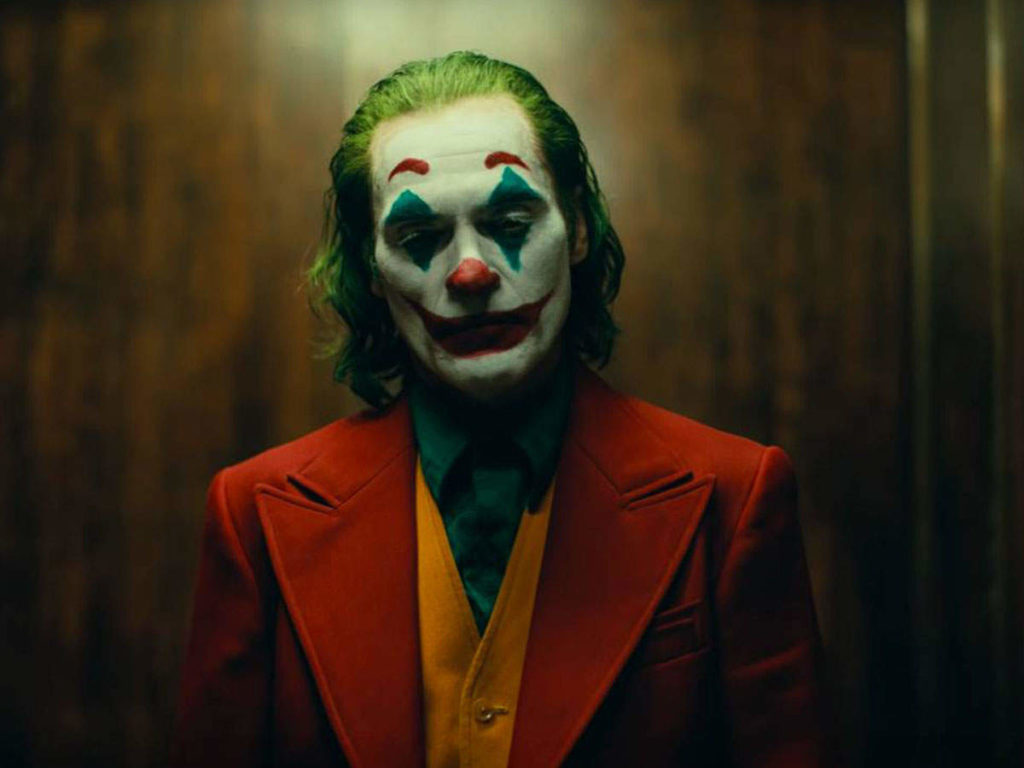
Borne on the waves of controversy and leaving a trail of smoggy fumes in its wake, Joker is arguably the movie of the year. Not the best movie of the year, mind you—not even close. But while the events of this strange and faintly maddening film take place in 1981, in the fictional realm of Gotham City, it is plainly designed to tap into the anxieties of the present moment, to Say Something significant, whether about art, commerce, politics, or society. It screams to be pored over, analyzed, debated; it’s a movie that also feels like the belabored setup for a podcast. Does it glorify incel culture, or is it a pointed critique of toxic masculinity? Is it a scabrous attack on the wealth gap, or an ardent defense of the established social order? Is it a violent fantasy, or a repudiation of violence?
In theory, these are interesting questions, but Joker, which was directed by Todd Phillips from a script he wrote with Scott Silver, has no interest in answering them. That may in itself sound bold; after all, some of the world’s greatest art is open to vigorous interpretation. Yet the great irony of this movie—the gag that surely has its maker imitating its antihero, cackling in high-pitched glee—is how meaningless it is. It feints at profundity, but it does not trouble itself with forming actual ideas. It is less a Rorschach test than a brightly colored finger painting. It splashes the frame with divisive topics—police brutality, mental illness, social unrest, powerful men, victimized women—and then passes off such haphazard daubing for the articulation of genuine themes. To the extent Joker has a philosophy of any interest, it is that it proclaims itself to be interesting.
Here’s the thing, though: It kind of is interesting. Or at least, it’s cinematically distinctive in ways that make it worth watching, despite its fundamental emptiness. For one thing, it’s rare to come across a comic-book movie that feels so untethered from the typical imperatives of the genre. Sure, various characters from the DC universe appear—this is, by my count, the 78th time we’ve witnessed the death of Bruce Wayne’s parents—but there is no specter of fan service, no post-credits teaser, no hint of a potential cross-over. Where the Deadpool films relentlessly lampooned the superhero industrial complex, making light of its formula and its safeness, Joker seeks to strip it bare, to replace its sanitized combat and pat redemption journeys with legitimate ugliness and terror. One of Phillips’s most unusual touches is to set the film in the midst of a garbage strike, a detail that magnifies its overall stench of rot, a marked contrast from the gleaming cleanliness of the Marvel Cinematic Universe.
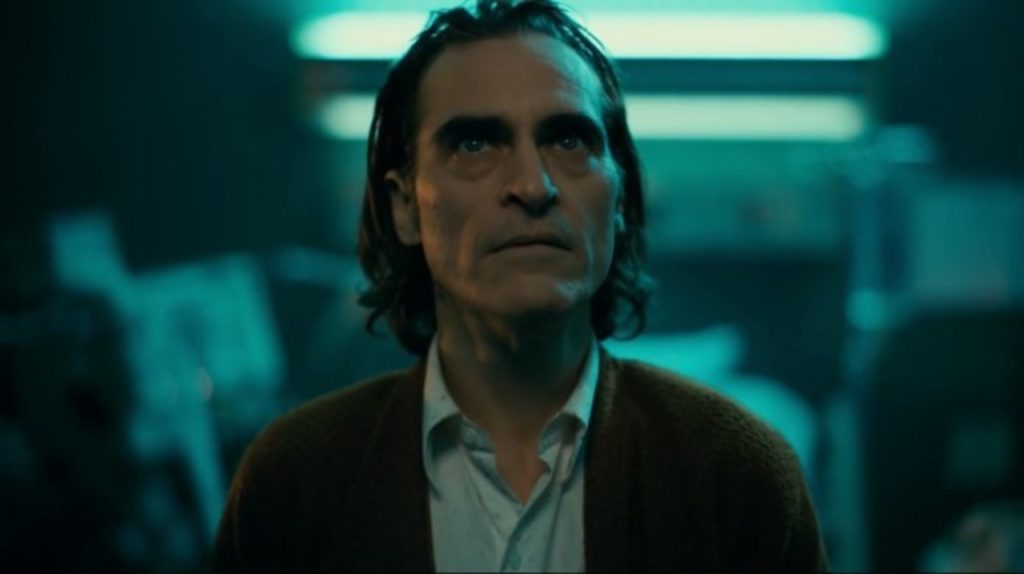
In fact, you could argue that Joker didn’t need to be a comic-book movie at all—that, like Martin Scorsese’s The King of Comedy (from which it obviously draws inspiration), it could have sufficed as a dark character study about an unstable New York loser who fancies himself the next Johnny Carson. But there’s a frisson of conflict in the way Phillips grafts his tale of mayhem and bloodshed onto a world that’s traditionally designed to appeal to children. And that brings us to the second interesting thing about Joker: Joaquin Phoenix. Playing a comic-book villain necessarily invites comparisons to other actors’ portrayals, but from our very first glimpse of Arthur Fleck—sitting in front of a mirror tugging upwards at the corners of his mouth, literally turning his frown upside-down—it’s clear that Phoenix isn’t attempting to match the notes of camp that Jack Nicholson brought to Batman, much less the slapdash derangement of Jared Leto in Suicide Squad. He’s after something stranger.
The seminal depiction of the Joker remains Heath Ledger’s turn in The Dark Knight, and while Phoenix wisely doesn’t try to imitate him either—he’s less propulsive and spontaneous, more mannered and coiled—he does imbue Arthur with a similar level of sickliness, a sense that he’s inhabiting a diseased man’s skin. That skin, by the way, is stretched tightly over a skeletal frame; Phoenix lost 52 pounds for the role, a testament to the actor’s absolute commitment to his craft. (Physical transformation may not be inherently valuable, but it’s still freakishly impressive; it seems impossible to reconcile the gaunt creature we see here with the burly brawler of You Were Never Really Here.) With his shrill giggle, lank hair, and hunched posture—when he bends over, his ribs threaten to poke through his skin—he renders Arthur not as a wild madman but a slowly ticking fuse, a simmering volcano ready to erupt. Arthur may be employed as a clown, but Phoenix isn’t kidding around.
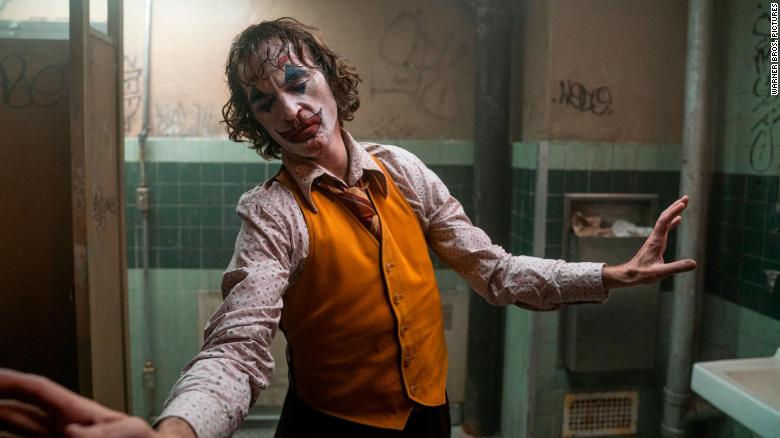
The story he anchors, however, is difficult to take seriously, an ungainly mix of false tragedy and garish juvenilia. Borrowing liberally from both The King of Comedy and Taxi Driver (though lacking those classics’ psychological nuance or emotional sensitivity), Joker tracks Arthur’s gradual descent—mentally, emotionally, economically. Phillips does display some laudable patience, as Arthur doesn’t appear to be especially disturbed during the film’s opening act. He cares for his ailing mother, Penny (Frances Conroy); he exchanges shy glances with a neighbor, Sophie (Zazie Beetz); and he receives reasonably steady work as a clown, twirling street signs and entertaining bedridden children. Sure, he has a bizarre medical condition which results in him bursting into random spasms of laughter—a piercing guffaw that Phoenix drains of all mirth—but he’s on medication and regularly visits with a state-appointed psychiatrist. His chortling also dovetails with his one passion, stand-up comedy, which is why he obsessively watches a late-night talk show hosted by Murray Franklin (Robert De Niro).
“Don’t you need to be funny to be a comedian?” Penny asks. Ouch. But Arthur’s questionable stand-up chops prove to be the least of his problems, especially once he loses his job and has a fateful encounter with three loutish Wall Street types on the subway. Bullets are fired, blood is spilled, and before long Arthur is in the grips of a full-on breakdown, smothering people with pillows or stabbing them in the neck with scissors. Casual conversations become choked with the possibility of violence, while a climactic episode of Murray’s show quivers with incipient carnage.
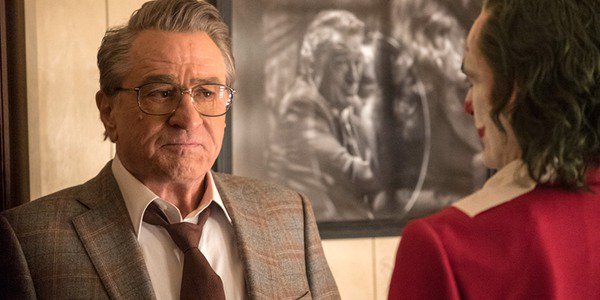
It’s ghastly stuff, but it’s also oddly vacant. Up to this point, Phillips has spent his entire career making nominal comedies, some of which (Old School, The Hangover) occasionally transcended their one-joke premises, some of which (Due Date, the second Hangover) totally flatlined. (I still have a soft spot for his first feature, Road Trip.) Tonally speaking, Joker is a dramatic departure, given that it isn’t remotely funny. But it isn’t really serious either, despite how badly it wishes to inflame an impassioned response. It’s mostly just unpleasant. Despite Phoenix’s technically astute performance, there’s nothing especially compelling about Arthur’s collapse. He isn’t sympathetic, nor does he function effectively as any sort of symbol, whether as a standard-bearer for the working poor or a lightning rod of Trumpian disenchantment. He’s just an angry guy in spooky makeup who does terrible things.
Yet while Joker fails to stand up to any sort of intellectual scrutiny, it remains persistently watchable, often in surprising ways. It tends to be most arresting in scenes without dialogue, such as when Arthur, in the aftermath of a bout of bloodletting, suddenly starts dancing in slow motion in front of a bathroom mirror. In fact, there are several scenes of Arthur hoofing—whether to pop songs or to the aggressive, string-powered sounds of Hildur Guðnadóttir’s score—all of which are weirdly hypnotic, Phoenix contorting his angular limbs to his own demented rhythm. And while Phillips’s visual style can be sloppy, he also supplies a number of striking images, such as a shot of Arthur perched in front of giant pastel curtains, a smiling demon set to be unleashed upon the world.
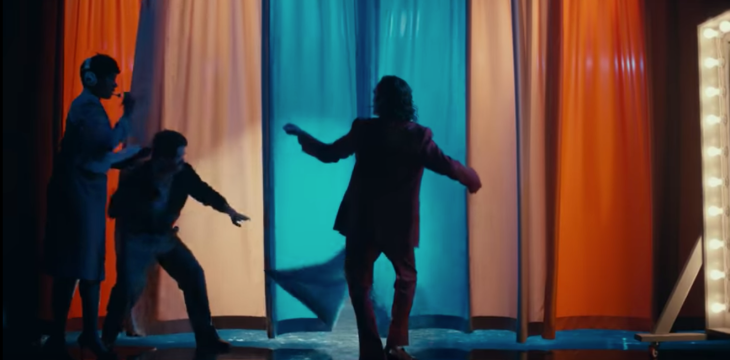
That level of artistry in no way extends to the movie’s secondary characters, who are all lazily written. De Niro’s presence automatically lends the film a sheen of credibility, but Murray is an empty suit, a feeble attempt to connect Joker to the works of Scorsese. A subplot excavating a past relationship between Penny and Bruce Wayne’s father (Brett Cullen) is calculated to be tantalizingly ambiguous, but it mostly just bogs things down. The most dubious supporting player is Sophie, who finds herself inexplicably drawn to Arthur’s shiftiness; an admittedly clever late reveal adds essential context to their relationship, but it also underlines Phillips’s inability to create three-dimensional people.
And what of the Joker, the crazy clown we all came to see? He is a cipher, a blank slate on which you can project your darkest fears. On a surface level, that’s vaguely horrifying, but Phillips is too cowardly for Joker to be truly scary. He lacks the courage to express an actual point of view, which makes him little more than an unusually surly jester. Near the end of the movie, we see Arthur standing in front of a bank of television screens, each displaying different consequences of his psychotic acts. The shot is presumably intended to be some sort of sweeping statement—maybe about the media, or the internet, or even violent films, who knows—but it’s devoid of any real meaning. In reimagining the concept of the comic-book villain, Phillips desperately wants to shock you. But to be a provocateur, don’t you need to have ideas?
Grade: C+
Jeremy Beck is the editor-in-chief of MovieManifesto. He watches more movies and television than he probably should.
